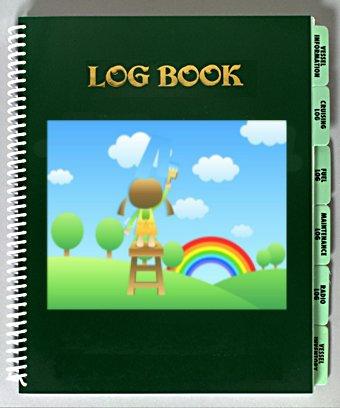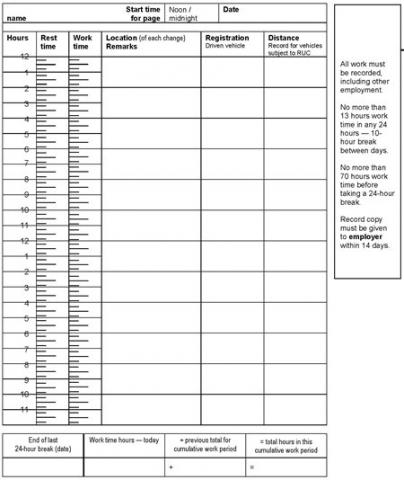Introduction
Students develop language skills through collaborative and interactive tasks around literary texts. These help them develop a lifelong habit of reading. Managing their reading habit and building a reading profile is a lifelong activity that will train their minds to think logically and also teach them to have an open mind. Getting students to work together makes tasks more meaningful and enjoyable. It also provides abundant opportunities to use language in meaningful and real-life contexts. Also, when students take charge of their reading habit, they become more motivated to read. In this unit, you will learn strategies to sustain your students’ interest in reading literary texts. This unit will also help you to help your students transfer their study skills to other subject areas.
Unit outcomes
Upon completion of this unit you will be able to:
|
Outcomes |
|
Terminology
|
Terminology |
Interactive tasks: |
Classroom exercises that allow students to listen and speak to one another using English and to share ideas. |
Blog: |
(From weblog.) A regular record of our thoughts, opinions and experiences that we put on the Internet for other people to read. |
|
Discussion web: |
Classroom discussion points put in the form of bubbles as the discussion evolves. |
|
Literary exchange: |
A process of sharing summaries of the literature books with members of other classes, institutions or nations. |
|
International Internet exchange: |
A process whereby literature books read by students of one country are shared with friends in another country via the Internet. |
Teacher support information
The activities in this unit should help your students to work as individuals, in pairs or in small groups, and to interact at various levels to accomplish tasks in and outside the classroom. As you work through the unit, you might like to keep notes on the tasks and types of literary texts that the students choose, and the difficulties that prevent them from making the required progress (if applicable).
Case study
|
Case study |
Ms Shikha Pandit is a JSS I English teacher in a remote school in India. She was concerned about her students’ general indifference to reading literature, especially poetry. She worried about the fact that they were missing out on the valuable exposure to life’s experiences that literature offers. They were also being deprived of access to the vast collection of literature written for their age group. This lack of exposure to interesting literary texts written in good English was also preventing them from developing their own language skills. Ms Pandit decided to initiate collaborative and interactive tasks around children’s literature to stimulate interest in extensive listening, speaking, reading and writing. Some of her techniques included classroom discussions, read-aloud picture books, maintaining a log of books read and encouraging healthy competition between the students to read and review the most books. As a result of her efforts, her students became more interested in the lessons, demonstrating improved reading comprehension skills and developing an overwhelming interest in reading. Two additional benefits of this were enhanced literacy development and content area learning. In fact, Ms Pandit’s efforts also helped to promote literacy across the curriculum, improving students’ comprehension of other subjects’ textbooks. |
|
Points to ponder |
|
Activities
Activity 1: Fostering the reading habit through a logbook
|
Activity 1 |
|
Activity 2: Exchanging literary reviews on the Internet: Writing a blog
|
Activity 2 |
This activity is meant to give students meaningful exposure to Internet-based resources such as a blog. Other resources that are based on collaborative and interactive Web-based activities are wikis and social networking sites or online communities (e.g., Facebook, Twitter, Myspace, LinkedIn, Picasa, Flickr). If your school does not have computers with Internet access for students, allow them to work at home or anywhere they have Internet access. The Internet is a wonderful source of useful information, and we should make the best possible use of it for learning purposes. Before the students begin this activity, you can give them a preparatory homework assignment to find out about blogging on the Internet, its advantages, its problems and so on. They can then share their knowledge with the class so that everyone becomes familiar with the concept and understands what steps will be involved in writing a blog. If you have the facilities, you can log on to the Internet and show your students a blog page. A quick Google search can take you to a blog if you are not familiar with the concept yourself. (Several popular blogs are maintained by English teachers; for example, Dave’s ESL Café and Nik Peachey’s blog.) (See Resource 2a for a sample blog page.) For the activity, give your students one week to read a literary text and prepare a review of it in one paragraph. The review should contain details similar to the ones given for the logbook in Activity 1 above, including an evaluation of the book. When they are ready, show a group of them (you can select students who are already familiar with using a computer and the Internet) how to post their entries on a blog. You can help them create a personal blog (there are sites that help you to do it in a set of easy-to-follow steps if you are not confident about this) or post their entries on any existing blog that is based on such reviews. This group in turn can become group leaders and teach the others how to submit their entries to the same blog. Once the students are familiar with the process, encourage them to give and collect feedback on the blog entries. Show them how fascinating it is to have people from all over the world — people we have never met and probably will never meet — commenting on our entries. They can then continue the chain of comments, add more entries, read reviews written by other people and so on. This exercise will help them in several ways: (i) they will learn to navigate meaningfully through Internet-based learning resources and discover more ways of enhancing their knowledge and information base; (ii) their language skills will improve, as they will learn to read quickly and react appropriately, and to write in a lucid and comfortable style; (iii) they will have an opportunity to network with people of all ages and to learn more about different cultures and life experiences; and (iv) most important, they will have a motivation for reading and reviewing more literary texts. If you and your students do not have access to computer-based learning resources, your students can do this activity by writing to pen friends. You can help them by collecting (maybe from the Internet) addresses of people in their age group and helping them write letters in English. A sample letter to a pen friend on a book review is given in Resource 2b. If even that is not a viable option, you can have intra- and inter-class exchanges of critical comments on the texts. Encourage your students to select friends in their class or from other classes in the school as partners with whom they can exchange summarised critical comments. Their comments should include the information as shown in Resource 1: JSS literature reading log. As a follow-up exercise, you could display the materials and information gathered through these literature exchange activities on the class noticeboards and bulletin boards. They can then be used for further classroom discussions, social interactions and reading and writing activities. |
Activity 3: Literacy development across curricula: Recording information from other subject areas
|
Activity 3 |
Now that your students have had a fairly good amount of practice analysing the language of literary texts, you can help them apply their skills to other subjects, such as Science, Social Studies, Geography, Economics, Environmental Studies and so on. In this activity, you will learn a technique to help your students use their language skills meaningfully when studying texts for other subjects: recording information about important topics. For this activity, collect sample texts (a short topic should do) from your students’ other subject textbooks or have them all read the same texts from their own textbooks. Choose texts that are short (two or three paragraphs) and can be read and discussed in class. The students’ task (explained below in more detail) will be to present the information gleaned from the text to the rest of the class. To do that, they must first learn to record the information correctly. Students also need to learn how to extract information from a passage and present it orally or in written form. The task on Environmental Science (below) will take them through the recording process. Then, using the same procedures, record the information from the passage from another subject that you have given them and present it to the class. The preparatory activity for this task involves students listening to an audio/video recording of a person reading out information about an environmental issue. If you cannot play the audio/video clip, you can read the transcript given in Resource 4 instead. As the students listen, they should note down the information in the grid below. (A completed form of the grid is given in Resource 3.) Do not tell the students beforehand what subject area the recording/reading deals with. Let them work it out as they listen. The objective of the task is to make them understand first-hand how to record information precisely and easily. Let the students listen to the clip twice, so that they can get the information correct, and so record the information correctly.
Now have a class discussion about what goes into a good report/review of a topic read. The students should come up with points like clear presentation of facts (e.g., subject and topic), listing of main points, commenting on the language style and the need to give a good assessment. For the main activity, divide the class into groups of five or six, and give each group a topic from a different subject area to read. As they read, they should note down the information in the grid, and then write a paragraph on their topic. When all the groups are ready, ask them to present their reviews to the class. The class should listen actively and comment on the presentation, suggesting modifications, if necessary. The two or three best presentations can then be displayed (along with illustrations or diagrams) on the display board. |
Unit summary
|
Summary |
In this unit you learned how to organise collaborative and interactive tasks around literature by reviewing literary texts. You also learned to use literature to facilitate the learning of other subjects, and to develop the literacy skills of your students in the process. |
Reflections
|
Reflection |
|
Assessment
|
Assessment |
|
Resources
Resource 1: JSS literature reading log
|
Resource 1 |
To encourage your students to read, and make them responsible for actually reading literary texts, you can keep a logbook on a stand in a corner of the classroom, and have the class monitor update it every week. The logbook should be thick enough to accommodate multiple entries. Each student could be assigned two pages and encouraged to log the books they read every week. There could be a review at the end of the week, with the teacher or a volunteer student reading out each student’s record of the details of the book and its brief summary. At the end of the year, the logbook could be shared with other teachers and the students’ parents or guardians, so that the students’ efforts are acknowledged. One or two students can also be asked to talk about their experience of log keeping and what they have gained from it. Here are a few snapshots of logbooks:
A sample page from a logbook Student: Roshan Seth Logbook page numbers: 34-35
|
Resource 2a: Internet-based learning resource: Blog entries
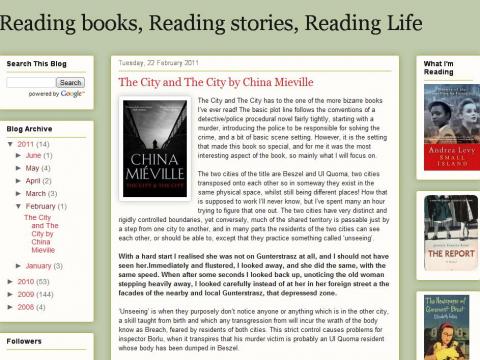
From: http://peachybooks.blogspot.com/
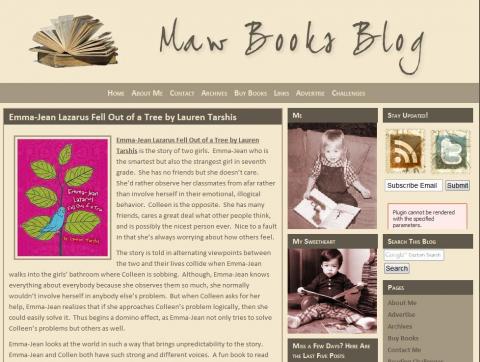
From: http://blog.mawbooks.com/
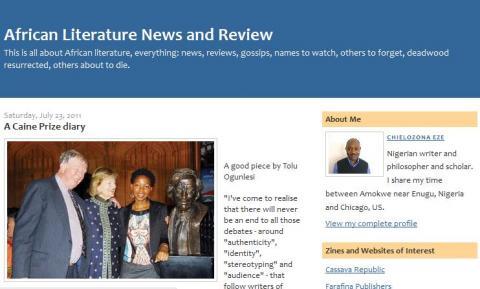
From: http://africanliteraturenews.blogspot.com/
Resource 2b: Sample letter to a pen friend
|
Resource 2b |
Hi Jim, My name is Mary Mbeki and I’m a student in Grade 9 at Holy Heart Secondary School. I got your address from a friend and I’d like to be your pen friend. Would you like it too? What are your interests? Mine are singing and reading, and at the moment I’m reading a book called Lion and the Jewel by Wole Soyinka. Have you read it? It’s a lovely book, and I’m sure you’ll enjoy reading it as much as I have. Let me tell you a little more about it_____________________ What are your interests? Have you read any books lately? Please tell me about them. It would be lovely to exchange and discuss our comments on the books we read. More for the next letter… DO reply fast! I’ll be waiting eagerly to hear from you. Best wishes, Mary |
Resource 3: Transferring information from text to visuals: Information chart on sample topic from Environmental Science
|
Resource 3 |
|
Resource 4: Environmental Science passage: Global Warming
|
Resource 4 |
Definition Global warming is a slow but steady rise in the Earth’s surface temperature. Some people think that the warming is because of people burning fossil fuels like coal and oil. Some also think that human beings are cutting down too many trees. Most scientists believe that the sun actually became colder and is not to blame. If this is so, the Earth should be slightly colder. Many scientists say that the temperature will rise about 3.7 °C (6.7 °F) more in 100 years. Most major governments and science groups agree with these ideas. Effects of the Earth’s temperature rise If the Earth’s temperature becomes hotter, the sea level will also become higher because the temperature rise will make ice glaciers melt. The sea level rise may cause coastal areas to flood. Weather patterns, including where and how much precipitation there is, will change. Deserts will increase in size in some areas and decrease in others. Colder areas will become warmer faster than warm areas. Strong storms may become more likely and farming may not make as much food. These effects will not be the same over the entire Earth. People in government have talked about global warming. They do not agree on what to do about it. Humans can burn less fossil fuels, adapt to any temperature changes, or try to change the Earth to reduce warming. The Kyoto Protocol tries to reduce pollution from the burning of fossil fuels. Most governments have agreed to it. Some people in government think nothing should change. Some causes of increase of atmospheric carbon dioxide (CO2) Coal-burning power plants, car exhausts, factory smokestacks and other man-made waste gas vents give off about 23 billion tons of carbon dioxide and other greenhouse gases into the Earth’s atmosphere each year. The atmospheric concentration of carbon dioxide has increased by 31% above pre-industrial levels since 1750. About three-quarters of the human-made emissions of carbon dioxide into the atmosphere during the past 20 years are due to fossil fuel burning. The rest is mostly because of changes in how land is used, especially deforestation. People also make a lot of dust and dirt. Some of this dirt could stay in the air for years, and can cause changes in the temperature of the Earth. Possible responses There are two main ways that people think global warming can be stopped. The first is to stop putting greenhouse gases into the atmosphere. Many people have tried to get countries to stop emitting greenhouse gases. The Kyoto Protocol was signed in 1997. It was supposed to reduce the amount of greenhouse gases in the atmosphere to below their levels in 1990. As of 2010, the Kyoto Protocol has not worked in reducing greenhouse gas levels. Carbon dioxide levels today are the highest they have been since the start of the Industrial Revolution. The second is for people to change how they live because of any changes that global warming will bring. The amount of money a country has will affect how easily it adapts. Rich countries like the United States will be able to change more easily, while poor countries such as Bangladesh may not be able to change. |
|
Video |
Resource files
See in the enclosed DVD a video recording of the activity:
|
|
Audio |
See in the enclosed DVD an audio recording of the activity:
|
Teacher question and answer
|
Feedback |
Question: How can I teach my students to work with other language texts when I need to finish my own syllabus in time? Answer: A possible solution would be to team up with other subject teachers and do the activities in one of their classes. It would certainly mean extra effort for you, so you could ask the principal and other colleagues for some help. If one colleague can share your teaching assignments, or at least some of them, you could devote the extra time for students’ language development in other subject areas. |
 |
 |
 |


